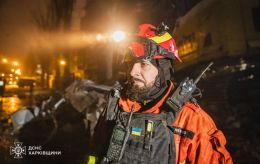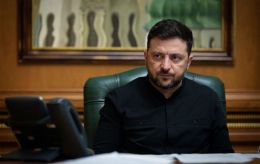Russian D-30SN bombs: Danger and risks of massive strikes on Ukraine
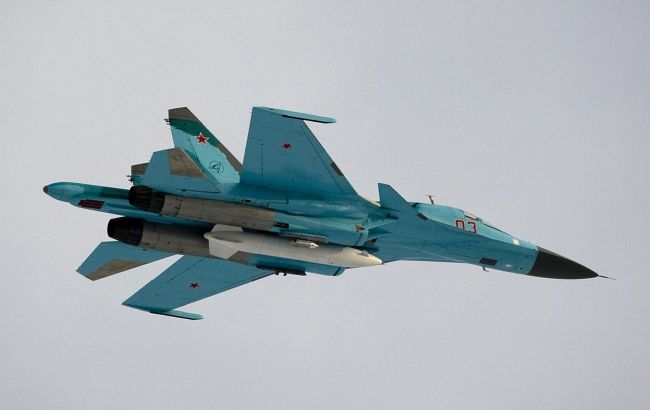 Illustrative image (Getty Images)
Illustrative image (Getty Images)
Russia is increasing the production of planning bombs, which are used to hit Kharkiv, Sumy, Zaporizhzhia, and frontline cities. At the same time, there are no more carrier aircraft for them.
RBC-Ukraine's article explains the dangers of the Russian D-30SN UMPB bombs and whether there is a risk that shelling will become more frequent.
Contents
- How Russians could increase production of UMPBs
- UMPBs and how it differs from UMPC bombs
- Danger of D-30SN glide bomb
- More UMBPs - more strikes on Ukraine?
- How could Ukraine respond and what it needs
How Russians could increase production of UMPBs
The Russians have stepped up production of the D-30SN UMPB with a proven range of 90 kilometers. And even though they began to be actively used only in March 2024 with strikes on Kharkiv and cities in Donbas, there is now a rather rapid scale-up of production.
In particular, this is evidenced by the serial numbers on the ammunition fragments published by the specialized Telegram channel Sunflower dedicated to the Ukrainian Air Force.
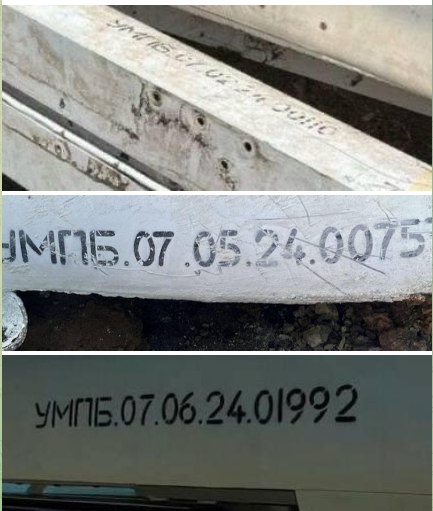
Photo: D-30SN UMPB debris (t.me/soniah_hub)
According to it, while Russia produced 110 UMPBs during the winter, in the spring it reached about 160, and in the summer - more than 600 units per month.
“These figures are overstated, but it doesn't make it any easier. The very fact that production has increased shows that this ammunition, although expensive, has proven itself on the battlefield,” the channel's authors note.
Strikes of such ammunition were recorded not only in Kharkiv or Sumy, a couple of such bombs recently hit Zaporizhzhia.
Among the latter, we can single out the Russian strike on Sloviansk on October 7. As a result, six apartment buildings, an administrative building, and a car wash were damaged. One person was killed and six others were injured, including a 2-year-old and a 13-year-old girl.
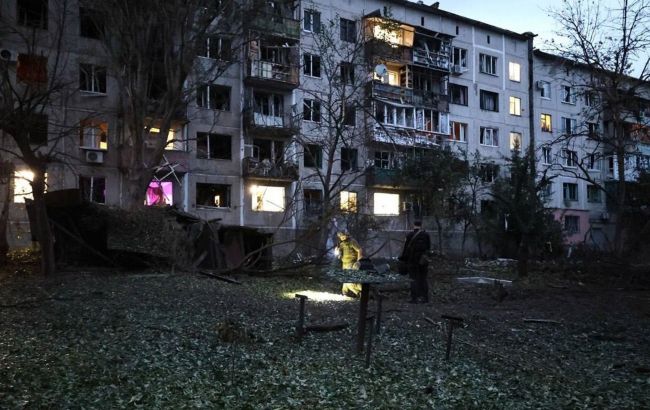
Photo: the aftermath of the UMPB arrival in Sloviansk (t.me mvs_ukraine)
Or the Russian strike on Kharkiv and the suburbs on October 2 using two Su-34 aircraft from the Belgorod region. According to air defense system monitoring, the speed of the UMPB was 600 km/h. In Kharkiv, 2 Russian bombs fell in the open, and the third hit a five-story building, causing injuries of varying severity to 10 people.
UMPBs and how it differs from UMPC bombs
Due to the rapid modernization of Russian aerial bombs, it is easy to get confused by the abbreviations UMPC and UMPB.
UMPC is a universal planning and correction module. It is used to convert conventional high-explosive bombs into corrected guided bombs by fitting them with wings, a tail unit with guided fins, and a GLONASS/GPS navigation module. The basic kit increases the range to 60-70 km.
UMPB is a unified interspecies planning munition. It is a planning bomb with built-in wings, a guided tailplane, and a navigation unit. But to increase the range, such a bomb is also equipped with a jet engine. The estimated total weight is 250 kg.
The 300 mm caliber of the munition indicates that the Russians developed it for the Tornado-S system. This system is equipped with GLONASS satellite navigation and a new fire control panel that allows for individualized flight missions for each munition. The declared range of the D-30SN with Tornado-S can reach up to 200 km. The range when launched from aircraft is 90 km.
Another difference is that the UMPB is a ready-made aircraft planning munition, while the UMPC is a kit for equipping bombs and turning them into guided aerial bombs.
Danger of D-30SN glide bomb
The main danger of the D-30SN is in the range of 90 km, explains aviation expert Valerii Romanenko.
“They are 20-30 kilometers more long-range than UMPB bombs. They are aerodynamically better and can be launched from more platforms. In addition to launching from Smerch and Tornado multiple launch rocket systems, for example, if the Russians deploy heavy S-70 Okhotnik UAVs (one was recently shot down by so-called friendly fire over Kostiantynivka - ed.), they can hang up to four such bombs on them,” he told RBC-Ukraine.
“In terms of power, they roughly correspond to FAB-250, that is, they have a total weight of 250 kg, and the weight of the warhead (explosive) is about 100 kg.
Of course, this is less than the FAB-500 or FAB-1500 that the Russian occupiers use at the front. “Yes, they cause more damage, but they fly closer. If you take FAB-1500 with UMPC, only two of them can be dropped from one aircraft. But these can be dropped at least four, and more if desired,” the source said.
Over the past year, all Russian successes at the front have been attributed exclusively to the use of guided aerial bombs.
“They tried to break through our air defense to throw conventional bombs. But this, according to Western experts, ended in a stunning defeat. It was a failure to modernize the methods of breaking through air defense, which they have in general somewhere around the end of the last century,” Romanenko added.
Unfortunately, Russia quickly found an effective method and now launches air bombs from a distance of several tens of kilometers from the front line to avoid exposing their aircraft to Ukraine's anti-aircraft missile systems.
More UMPBs - more strikes on Ukraine?
It might seem that increased production could lead to the Russians firing UMPBs at targets in Ukraine more often. But this is not entirely true.
“To deliver a bomb, you need carriers. And their number in Russia is not growing at the same rate. Even though they have stopped the production of civilian aircraft, the production of combat aircraft is falling by 15-20% every year. This year, they produced only two Su-57s, although they had about 10-15. That is, they simply do not have enough carriers to increase the intensity of strikes,” explains Romanenko.
“The current intensity is high because Russia's Su-34s are working as an assembly line. Today they are loaded, and Su-25s cannot climb to the altitude from which UMPBs are launched.
“This means that if the Russians triple the production of UMBPs, they will triple their stockpile. Perhaps the use will increase by 15-20% due to the Su-57. So I don't expect three times as many of these bombs to be launched at us,” he said.
Of course, Russia could abandon the guided aerial bombs with planning and correction modules in favor of the UMBPs. But this is unlikely, as a 100-kilogram bomb is ineffective against field fortifications and urban areas.
“There will not be a collapsing increase in discharges. But I don't see anything good in the fact that they will make large stockpiles,” the expert emphasized.
How Ukraine could respond and what is needed
RBC-Ukraine has repeatedly written that it is extremely difficult to shoot down guided aerial bombs in flight, so the most effective way is to destroy the carrier aircraft. The way out is to strengthen air defense with long-range systems that will shoot down the aircraft. But even better is to attack them on the ground, at their home airfields.
As for anti-aircraft missile systems, Romania has recently transferred an additional Patriot. Another battery was announced by our American partners. Valerii Romanenko hopes that reinforcement with such systems will at least partially solve the problem of anti-aircraft batteries, for example, for Kharkiv or Zaporizhzhia. However, deployment near the frontline threatens to destroy the Patriot.
This week, a video was posted on Russian public media showing the destruction of a launcher and a radar station, allegedly in the Dnipropetrovsk region. According to Yurii Ihnat, the acting head of the Air Force Communications Department, Russia only damaged a few pieces of equipment. And this Patriot unit continues to perform its tasks.
“I don't expect that we will be able to destroy the carriers of the guided aerial bombs out of the blue. The only option is that we will be allowed to strike Russia with our weapons and the Americans will suddenly provide JASSM missiles, not just for 370, but for 900 kilometers,” Romanenko said.
AGM-158 JASSM is a precision air-to-ground missile. One of the carriers is the F-16 multi-role fighter jet, several of which Ukraine has already received from Denmark and the Netherlands.
According to the expert, if Western partners provide such missiles without restrictions and in large numbers, strikes on Russian warehouses, airfields, control centers, and transportation hubs may follow. All the important military infrastructure, which the Russians were not so flexible about during the 2.5 years of war, we learned that it is impossible to build large warehouses, unlike the Russians, who accumulate ammunition, hoping that no one will shoot at them and they will be able to work in comfortable conditions.
In addition, a range of 900 kilometers means that half of Russia's arms manufacturers will pay and explode from repeated detonation.
“That's when Russia will fall apart. It will look like the end of the war. But it will be a military defeat for Russia. Unfortunately, the Americans fear this no less than they fear Ukraine's defeat,” the expert summarized.
Sources: open sources, Defense Express portal, and the Sunflower Telegram channel (dedicated to the Ukrainian Air Force), comments of Valerii Romanenko, a leading researcher at the National Aviation University (NAU).
